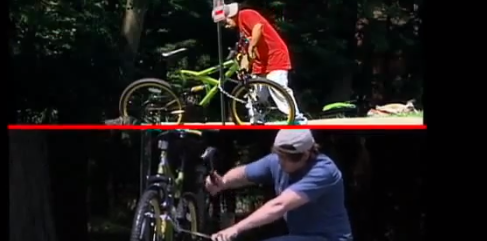Back in 2010 we featured a post about a segment from the “What Would You Do?” series from abc News that illustrated the way that race plays a role in who is labeled as deviant and who is given the benefit of the doubt.
The producers had teens vandalize a car in public to see what onlookers would do. To see if race played a role, they tried it with a group of White boys and then with a group of African American boys. Only one 911 call was made on the White boys, but 10 calls were made on the African American teens. Moreover, while the White teens were vandalizing the car, 911 received a call to report the African American boys simply for being asleep in a car, which the caller took as a possible sign they were planning to engage in criminal activity.
We see this same pattern in another “What Would You Do?” segment. This time, a young White man and a young African American man try to remove a lock from a bike as the cameras capture the reactions of onlookers.
The onlooker interviewed toward the end says race played no role in his reaction. But the extremely different reactions to the two teens indicate differences in who is perceived as likely to be engaged in criminal activity, and whose criminal activity we may think deserves being reported to the police, rather than given a disapproving tsk-tsk as we walk on by.
Gwen Sharp is an associate professor of sociology at Nevada State College. You can follow her on Twitter at @gwensharpnv.

Comments 10
Jessica — April 11, 2013
My students like another post you did that was somewhat related to this, on children's deviance: http://thesocietypages.org/socimages/2010/07/26/framing-childrens-deviance/. Those who haven't seen it (and who are interested in this phenomenon) should check that one out as well.
myblackfriendsays — April 11, 2013
white people.
Ryan — April 12, 2013
How about we remove cultural indicators such as differences in clothing and try this again? Or maybe we dress the white guy like a thug and the black guy as casual Friday?
I'm not saying that people are making their decision based on cultural identifiers over race, but not isolating the variable you're trying to measure makes this a pretty worthless video.
Matt Patterson — April 12, 2013
Near the end of the video, they show a white person helping the black actor when he thinks that it's a case of a lost key rather than a case of theft. That also reaffirms what psychological research in this area has shown. Non-black people tend to draw on racial stereotypes in negative situations rather than positive ones. They have similar reactions toward white and black people when they're on good terms with them. When they're on bad terms with them, however, they have much more negative reactions to blacks than whites.
K3ma3 — April 27, 2013
Also need to factor in the NEIGHBORHOOD environment as well as the PEOPLE. A white in a 'minority' area is more noticed than a minority would be. The opposite is also true, placing a minority in a white area attempting something 'criminal'.
Sandy Hook, “White-on-White Crime,” and How Privilege Kills | Carte Blanchfield — December 11, 2014
[…] (if you don’t believe me, read this piece by Lisa Wade). The bias of treating black children as deviant troublemakers while excusing or ignoring white children’s misbehavior continues into adolescence. As Jamelle […]